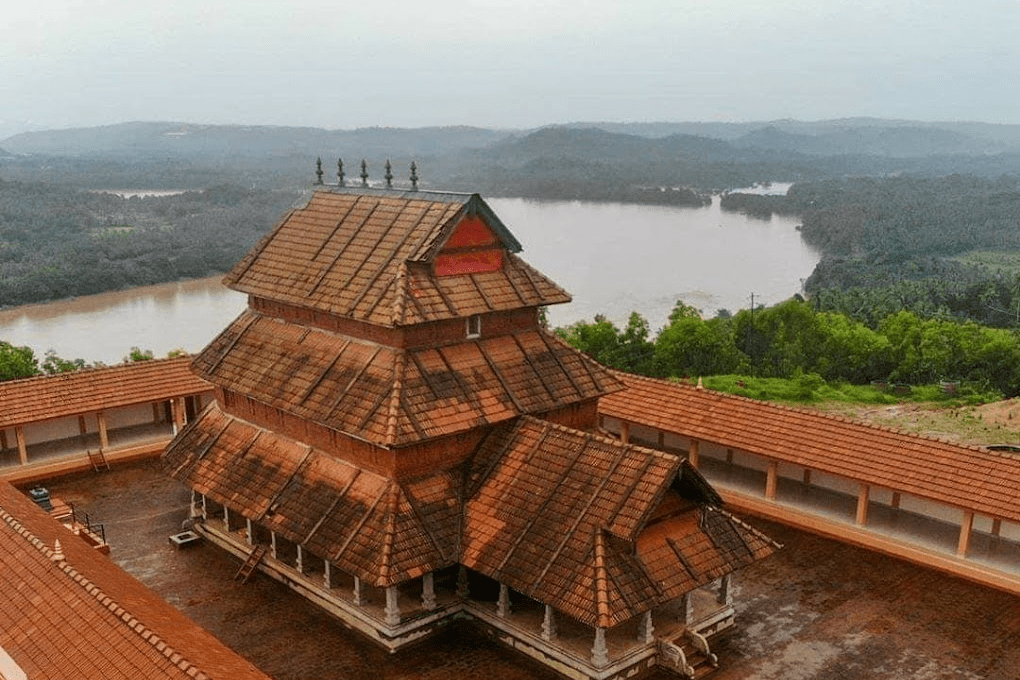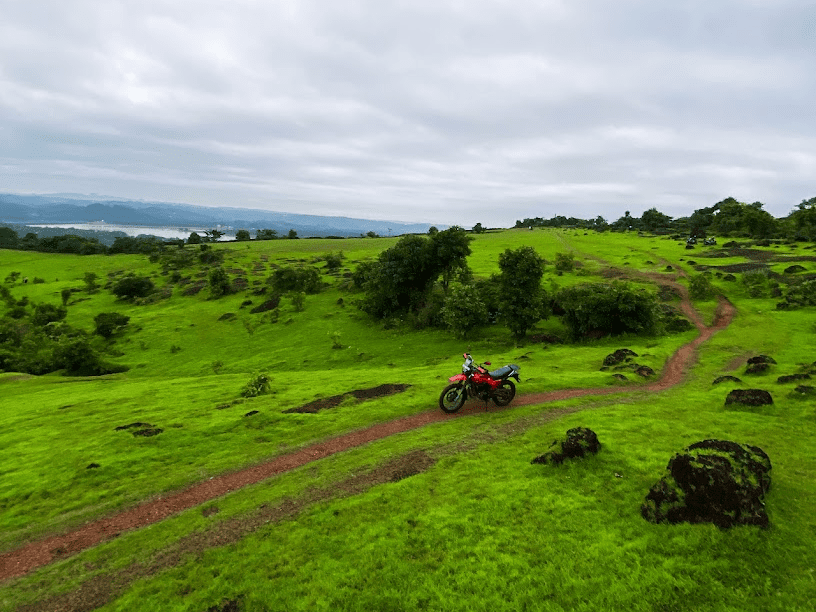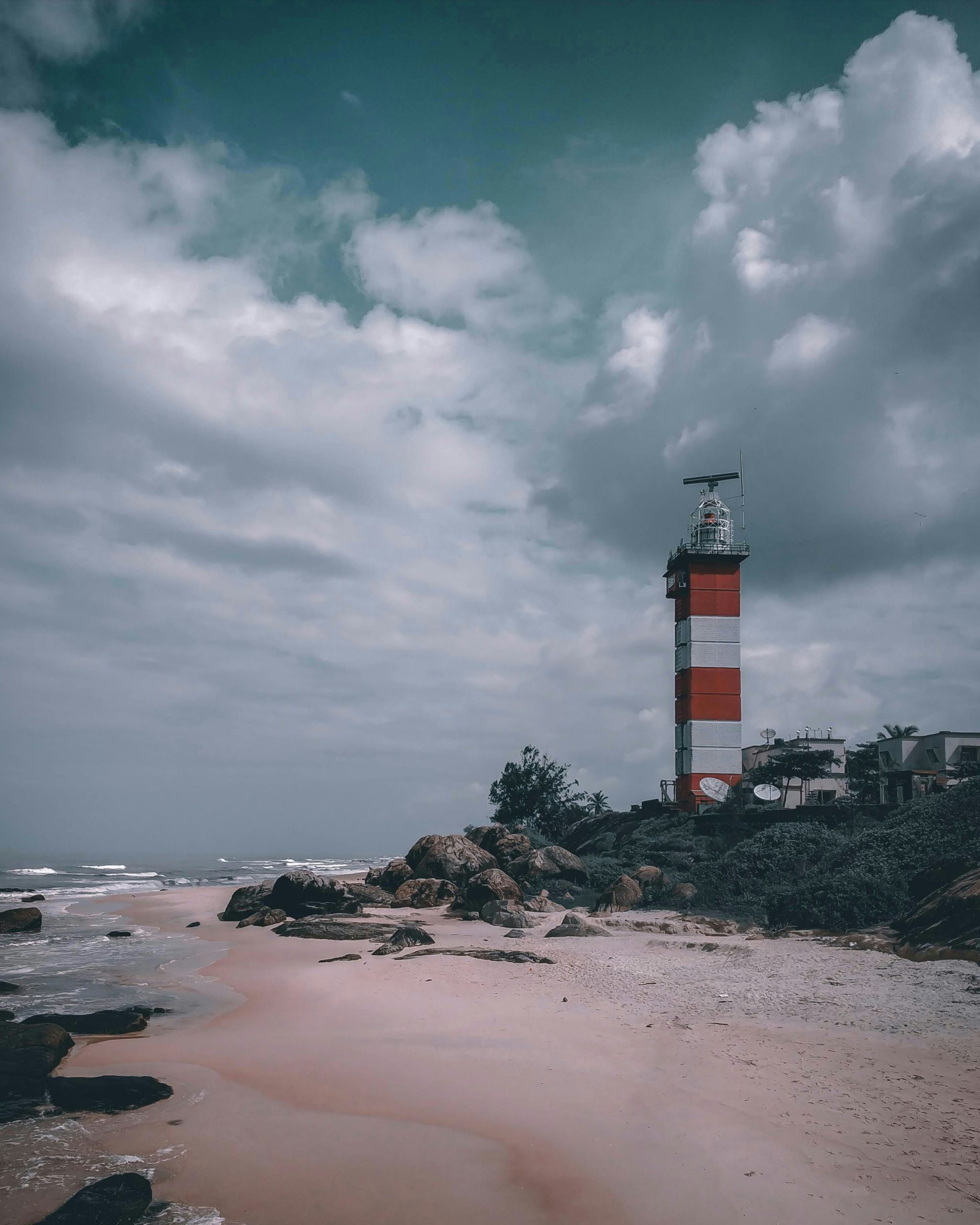Visiting popular tourist attractions in Mangalore only scratches the surface of this coastal paradise's true beauty. Most travelers never discover the pristine waterfalls, ancient temples, and breathtaking viewpoints known only to locals, missing authentic experiences that reveal the region's soul. This comprehensive guide unveils Mangalore's hidden gems that showcase its natural wonders and rich cultural heritage, allowing you to experience the city like a true insider.
Table of Contents
Breathtaking Waterfalls of Mangalore
Arbi Falls: A Tropical Paradise in Vamanjoor

Nestled in the lush forests of Vamanjoor, Arbi Falls offers a refreshing escape from Mangalore's coastal heat. Unlike the crowded tourist hotspots, this secluded waterfall rewards adventurous travelers with its pristine beauty and tranquil atmosphere.
The moderate 1.5 km trek through dense forest leads to cascading waters that plunge approximately 30 feet into a natural pool perfect for swimming. The best time to visit is during monsoon season (June to September) when the falls are at their most majestic, though post-monsoon visits ensure safer swimming conditions with clearer water.
To reach Arbi Falls, drive approximately 15 km from Mangalore city center to Vamanjoor, then follow local signage for the hiking trail. Wear comfortable footwear as the path can be slippery, and bring water and snacks as there are no facilities at the falls.
Adyar Hills & Falls: A Hidden Retreat for Nature Enthusiasts

Adyar Hills & Falls represent one of Mangalore's best-kept secrets, offering both breathtaking vistas and refreshing waterfalls in one location. Located just 12 km from the city center, this natural wonder remains surprisingly uncrowded even during peak tourist season.
The hills provide panoramic views of the surrounding countryside, while the multi-tiered falls create perfect spots for photography and meditation. Unlike more developed attractions, Adyar maintains its natural charm with minimal commercial interference.
Early mornings offer the best experience when mist often envelops the hills, creating an ethereal atmosphere. The moderate difficulty trail takes approximately 40 minutes to navigate, making it accessible for most fitness levels.
Jari Falls Karambar: Bajpe's Natural Wonder

Near the small village of Bajpe lies Jari Falls Karambar, a hidden cascade that few tourists ever discover. This secluded waterfall plunges dramatically through dense forest canopy, creating a spectacular sight especially during monsoon months.
What makes Jari Falls special is its relative isolation and the surrounding biodiversity. Lucky visitors might spot endemic bird species and unique flora around the falls. The natural pool at the base provides a refreshing swimming spot during safer seasons.
Reaching the falls requires a guided walk through private property, so it's advisable to arrange permission through a local guide.
Ermayi Waterfalls: Nature's Hidden Masterpiece

Ermayi Waterfalls stands as one of the region's most spectacular yet least visited natural attractions. Located approximately 25 km from Mangalore city center, these falls cascade down in multiple tiers through a verdant valley, creating an awe-inspiring sight.
What distinguishes Ermayi from other waterfalls is its unique rock formation that splits the water into twin streams before they reunite in a deep natural pool below. The surrounding forest hosts diverse wildlife, including various bird species and occasionally wild elephants in the distance.
Visitors should note that reaching Ermayi requires a moderate 3 km trek through forest trails, making proper footwear essential. The falls are most impressive between July and October when water volume peaks following monsoon rains.
Gundiadka Falls: The Hidden Jewel of Nagundi

Often referred to by locals as Nagundi Falls, this hidden gem lies approximately 30 km from Mangalore in a remote forested area that sees few visitors. The multi-tiered cascade creates a series of natural pools perfect for swimming during the dry season.
What makes Gundiadka Falls particularly special is the large cave formation behind the main waterfall, allowing visitors to experience the unique sensation of standing behind the rushing water. The surrounding area features unusual rock formations created over centuries of water erosion.
Reaching the falls requires navigation through unmarked trails, making a local guide essential for first-time visitors. The challenging access has helped preserve the falls' pristine condition and natural beauty.
Sacred Temples Off the Beaten Path
Shri Ananthapadmanabha Kudupu Temple: An Architectural Marvel

Hidden among lush greenery approximately 15 km from Mangalore city center, Shri Ananthapadmanabha Kudupu Temple represents one of the region's most significant yet undervisited religious sites. This ancient temple dedicated to Lord Vishnu features distinctive Dravidian architecture with intricately carved pillars and ornate ceilings.
What makes this temple special is its unique idol of Lord Vishnu in the Ananthashayana pose (reclining on the serpent Adishesha) – one of the few such representations in the region. The peaceful atmosphere and lack of crowds create a genuinely spiritual experience rarely found at more popular temples.
The temple complex includes sacred ponds and subsidiary shrines dedicated to various deities. Visit during the annual Brahmakalashotsava festival (usually in February-March) to witness traditional rituals and cultural performances.
Sharavu Mahaganapathi Temple: Ancient Worship in the City Heart

While located in Mangalore city, Sharavu Mahaganapathi Temple remains surprisingly undiscovered by tourists despite its significant religious and historical importance. Dating back over 800 years, this temple dedicated to Lord Ganesha features both Dravidian and Kerala architectural influences.
The temple's unique aspect is its dual presiding deities – Lord Ganesha and Lord Shiva – housed in adjacent sanctums. The intricate wood carvings on the temple ceiling depict scenes from ancient Hindu scriptures and represent masterpieces of traditional craftsmanship.
Visit during early morning hours (6-8 AM) to experience authentic religious ceremonies and avoid the limited crowds that gather later in the day. The temple's annual festival in December-January features elaborate processions worth witnessing.
Sri Karinjeshwara Temple: Bantwal's Mountain Sanctuary

Perched atop a hill near Vagga village in Bantwal Taluk, approximately 25 km from Mangalore, Sri Karinjeshwara Temple offers both spiritual significance and breathtaking panoramic views of the surrounding countryside.
This ancient Shiva temple stands out for its unique black lingam, believed to possess special powers for devotees seeking family harmony and relief from obstacles. The temple's isolated location on a forested hilltop creates a peaceful atmosphere conducive to meditation and spiritual reflection.
Reaching the temple requires climbing approximately 200 stone steps, making the journey itself part of the spiritual experience. Visit during Shivaratri celebrations to witness special rituals performed only once annually.
Inoli Shree Somanatheshwara Temple: A Forgotten Masterpiece

Far from the tourist trail lies Inoli Shree Somanatheshwara Temple, an architectural gem that showcases the region's religious heritage. This temple dedicated to Lord Shiva features unique architectural elements that blend Kadamba and Hoysala influences – a rare combination in the region.
What makes this temple particularly special is its ancient stone carvings depicting various forms of Lord Shiva and scenes from Hindu mythology. Art historians consider some of these carvings to be among the finest examples of medieval stone craftsmanship in coastal Karnataka.
The temple's annual Rathotsava (chariot festival) in January-February offers visitors a chance to witness traditional religious ceremonies largely unchanged for centuries. The temple's remote location means even during festivals, it rarely feels crowded or commercialized.
Scenic Viewpoints for Nature Lovers
Saripalla View Point: Mangalore's Secret Overlook

While most tourists flock to popular coastal viewpoints, Saripalla View Point remains largely unknown despite offering some of the most spectacular panoramic vistas in the region. Located approximately 20 km from Mangalore city, this elevated natural platform provides unobstructed 360-degree views of verdant valleys, distant mountains, and on clear days, even glimpses of the Arabian Sea.
What makes Saripalla special is the diversity of landscapes visible from a single point – from dense forests to agricultural fields and distant urban areas. Sunset hours transform the view with dramatic lighting conditions perfect for photography enthusiasts.
The viewpoint remains accessible year-round, though monsoon season offers the most vibrant green landscapes. Consider bringing binoculars to spot wildlife in the distant forests below.
Gadaikallu: The Mystical Narasimha Gudde of Belthangady

Often called Narasimha Gudde by locals, this massive monolithic rock formation near Belthangady creates one of the region's most distinctive natural landmarks. Rising approximately 300 feet above the surrounding countryside, the site offers adventurous travelers both historical significance and breathtaking views.
The rock's unusual shape has inspired local legends connecting it to Lord Narasimha (the lion incarnation of Vishnu). Ancient rock-cut steps and small shrines dot the formation, indicating its long history as a place of worship and meditation.
Reaching the summit requires a moderately challenging climb of about 45 minutes, rewarded with panoramic views extending to the Western Ghats. Early mornings offer the clearest visibility and the magical experience of watching mist rise from surrounding forests.
Sulthan Battheri: The Forgotten Historical Viewpoint

Few visitors to Mangalore ever discover Sulthan Battheri, a historically significant hilltop that combines cultural heritage with natural beauty. This elevated area features remnants of ancient defensive structures reportedly dating back to Tipu Sultan's era, along with panoramic views of surrounding landscapes.
What distinguishes this viewpoint is the unique combination of historical ruins integrated into the natural setting. The stone structures frame views of distant hills and valleys, creating perfect photo opportunities.
The site remains largely undeveloped, preserving its authentic character. Visit during weekdays to potentially have the entire viewpoint to yourself – a rare experience in today's crowded tourist destinations.
Historic Forts and Cultural Sites
Jamalabad Fort: The Impregnable Fortress of Belthangady

Perched dramatically atop a massive 1,788-foot high rock outcrop near Belthangady, Jamalabad Fort represents one of the region's most impressive yet undervisited historical sites. Built by Tipu Sultan in 1794 and named after his mother Jamalabee, this formidable fortress was designed to be virtually impregnable.
What makes Jamalabad truly special is the challenging ascent via 1,876 steps carved into the rock face – a journey that discourages casual tourists but rewards determined visitors with both historical immersion and spectacular panoramic views extending to the Arabian Sea on clear days.
The fort's unique architectural elements include strategically positioned defensive walls, water storage systems designed for long sieges, and secret escape routes. Visit during the cooler morning hours (before 11 AM) to enjoy the climb in comfortable conditions.
Koragajja Adisthala: Kuthar's Spiritual Mystery
In the village of Kuthar lies one of Mangalore's most culturally significant yet seldom-visited sacred sites. Koragajja Adisthala represents a unique form of spirit worship indigenous to the Tulu Nadu region, offering cultural explorers insight into local spiritual practices rarely experienced by outsiders.
Unlike conventional temples, this shrine dedicated to the spirit deity Koragajja features distinctive elements including colorful masks, symbolic weapons, and unique offering rituals. Local devotees believe the spirit offers protection and resolves conflicts within the community.
The shrine comes alive during night ceremonies when traditional Bhoota Kola performances (ritual spirit possessions) take place, featuring elaborate costumes, intense drumming, and trance-like dances. Visitors should approach these ceremonies respectfully and ideally arrange visits through locals familiar with appropriate etiquette.
Coastal Hidden Gems
Sasihitlu Sea Walk: The Untouched Coastal Paradise

While tourists crowd Mangalore's main beaches, Sasihitlu Sea Walk offers a tranquil coastal experience approximately 20 km north of the city. This relatively new attraction features a well-designed promenade that allows visitors to walk alongside pristine shoreline without the commercial development found at more popular beaches.
What distinguishes Sasihitlu is the unique landscape where the Nandini River meets the Arabian Sea, creating ever-shifting sandbanks and distinctive coastal ecosystems. The area hosts numerous seabird species, making it ideal for wildlife photography.
Visit during weekday evenings to witness spectacular sunsets with minimal crowds. Unlike commercial beaches, Sasihitlu maintains its natural character with limited facilities – bringing water and snacks is advisable.
Alai Surfing Point: Sasihitlu's Adrenaline Secret

Adjacent to the Sea Walk lies Alai Surfing Point, one of India's least known yet most promising surfing destinations. This beach break at Sasihitlu offers consistent waves suitable for both beginners and intermediate surfers without the crowds found at more established surfing spots.
What makes Alai special is the combination of reliable wave conditions and the cultural experience of surfing alongside the small but growing local surfing community. Several local fishermen have become skilled surfers and occasionally offer informal lessons to visitors.
The best surfing conditions typically occur from November through March, with wave heights averaging 2-4 feet. A small surf school operates seasonally, offering board rentals and basic instruction.
Varanga Lake Jain Temple: Architecture on Water

Approximately 40 km from Mangalore lies one of the region's most photogenic yet rarely visited religious sites. The Varanga Lake Jain Temple (Kere Basadi) sits on a small island in the middle of a serene lake, creating a visually stunning setting unlike any other temple in the region.
Dating back to the 13th century, this temple dedicated to the Jain Tirthankara Parshvanatha features distinctive architecture that appears to float on the water's surface. The temple is accessed via a small stone pathway that submerges during high water levels, adding to its mystical quality.
Beyond its picturesque setting, the temple houses beautiful stone carvings and ancient Jain artifacts. Visit during early morning hours when calm waters create perfect reflections of the temple structure, ideal for photography.
FAQs About Mangalore's Hidden Gems
What is the best time of year to visit Mangalore's hidden waterfalls?
The best time to visit Mangalore's hidden waterfalls is immediately after the monsoon season (October-November) when water flow remains substantial but conditions are safer for swimming and trekking. During peak monsoon (June-September), waterfalls like Arbi and Ermayi are at their most spectacular volume, but access trails may be slippery and dangerous. If you're primarily interested in photography, monsoon visits provide the most dramatic scenes, while post-monsoon offers better overall experiences.
How accessible are these hidden gems for travelers with limited mobility?
Most of Mangalore's hidden gems require moderate physical ability due to their undeveloped nature. Locations like Sasihitlu Sea Walk and Sharavu Mahaganapathi Temple are relatively accessible with paved pathways. However, sites such as Jamalabad Fort (1,876 steps) and most waterfalls require challenging treks. Temples like Shri Ananthapadmanabha Kudupu have some accessibility features but may pose challenges. Consider contacting The Shoolin Group for specialized accessibility information for specific sites.
Are guides necessary for visiting these hidden gems in Mangalore?
While technically possible to visit some locations independently, local guides are highly recommended for most of Mangalore's hidden gems. Waterfalls like Gundiadka and Jari Falls lack proper signage and require navigation through unmarked forest trails. For cultural sites like Koragajja Adisthala, guides provide essential context about appropriate behavior and cultural significance. Even for more accessible locations, guides enhance the experience with historical and cultural insights rarely found in conventional travel guides.
What should I pack when visiting Mangalore's hidden waterfalls and hiking spots?
For waterfall and hiking destinations, pack quick-dry clothing, sturdy water-resistant footwear with good grip, insect repellent, a small first-aid kit, and plenty of drinking water. During monsoon season (June-September), waterproof bags for electronics and rain protection are essential. Many locations lack facilities, so bring snacks and carry out all trash. For temples and cultural sites, pack modest clothing that covers shoulders and knees, and bring a light scarf or cover-up for women visiting more traditional temples.
How difficult is the trek to Arbi Falls in Vamanjoor?
The trek to Arbi Falls is moderately challenging, covering approximately 1.5 kilometers through forest terrain with some steep sections. Most reasonably fit individuals can complete the trek in 30-45 minutes each way. The trail becomes significantly more challenging during and immediately after monsoon rains when mud and slippery surfaces increase difficulty. First-time visitors should consider using a local guide, as trail markers are limited and some sections require crossing small streams depending on seasonal conditions.
Can I swim safely at the waterfalls mentioned in this guide?
Swimming safety varies greatly by season and specific waterfall. Gundiadka (Nagundi) Falls offers relatively safe swimming in its natural pools during the dry season (December-May) but becomes dangerous during monsoon months. Arbi Falls provides safer swimming opportunities in post-monsoon periods when water force has decreased but pools remain full. Always check current conditions locally before swimming, as rainfall in distant hills can cause sudden water level increases. Never swim alone, and avoid swimming if you see warning signs of increased water turbidity or flow rate.
What cultural etiquette should I observe when visiting temples like Sri Karinjeshwara?
When visiting temples like Sri Karinjeshwara, remove shoes before entering temple sanctums, dress modestly (covering shoulders and knees), and speak quietly. Photography is often restricted in inner sanctums but permitted in outer areas. At Sharavu Mahaganapathi and other traditional temples, avoid touching idols or ritual objects. For sites like Koragajja Adisthala, specific local customs apply—never mock or imitate ritual practices and ask permission before photographing ceremonies. Women should note that some temples restrict entry during menstruation, though this is rarely enforced for tourists.
Is it possible to visit Jamalabad Fort as a day trip from Mangalore?
Jamalabad Fort is manageable as a day trip from Mangalore, though it requires early departure. The drive from Mangalore to the fort base takes approximately 1.5-2 hours, followed by a challenging 2-3 hour climb up 1,876 steps. Allow 1-2 hours at the fort and another 1-1.5 hours for descent. In total, expect a 8-10 hour roundtrip experience. For maximum enjoyment, depart Mangalore by 7 AM to complete the climb before midday heat. Consider arranging transportation through The Shoolin Group to navigate the rural roads efficiently.
What wildlife might I encounter at these hidden gems around Mangalore?
Mangalore's hidden gems host diverse wildlife depending on location. Forest waterfalls like Ermayi occasionally have elephant sightings in surrounding areas (viewed safely from a distance). Adyar Hills & Falls is known for varied birdlife including kingfishers and occasionally hornbills. Primates like bonnet macaques are common near Jamalabad Fort. Coastal locations like Sasihitlu host numerous shorebird species including plovers and sandpipers. While generally non-threatening, maintain respectful distances from all wildlife and never feed animals at these locations.
Are there food options available near these hidden gems?
Most of Mangalore's truly hidden gems have limited or no food facilities on-site. Temples like Sharavu Mahaganapathi often have small prasad (blessed food) offerings but not full meals. For locations like Jamalabad Fort and remote waterfalls, bring sufficient food and water. Some sites like Sasihitlu Sea Walk have small seasonal food vendors selling basic refreshments. For longer excursions, consider packing a substantial meal or arranging lunch through your tour provider. The Shoolin Group can arrange packed meals for their guided tours to remote locations upon request.
Conclusion
Mangalore's hidden gems offer authentic experiences that showcase the region's true character beyond conventional tourist attractions. From the spiritual tranquility of ancient temples to the natural splendor of secluded waterfalls, these lesser-known treasures reveal a side of coastal Karnataka rarely experienced by visitors.
By venturing beyond the obvious attractions, travelers gain deeper appreciation for Mangalore's rich cultural heritage and natural beauty. Whether you're seeking adventure at remote waterfalls, spiritual connections at ancient temples, or simply peaceful moments away from crowded tourist spots, these hidden gems provide unforgettable experiences.
The next time you visit Mangalore, consider exploring these secret treasures to create memories that go beyond standard sightseeing. The region's true magic awaits those willing to step off the beaten path.
Plan your personalized exploration of Mangalore's hidden gems with The Shoolin Group












